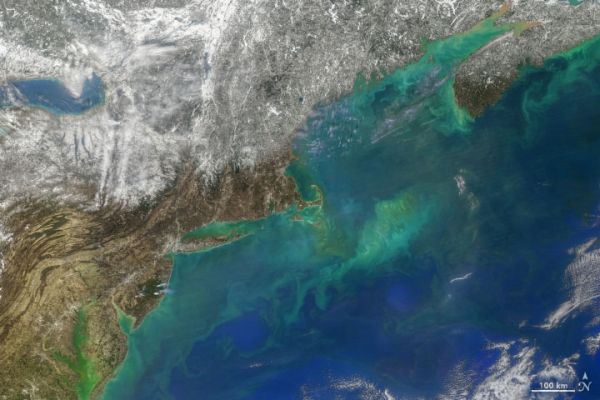Meteorological spring has sprung in the Northern Hemisphere, and that means the increasing hours of sunlight are slowly waking up primary producers in the sea. Like plants on the land, phytoplankton are floating, plant-like organisms that need sunlight and nutrients to thrive. Springtime brings both.
The image above was composed from data collected on February 23, 2020, by the Moderate Resolution Imaging Spectroradiometer (MODIS) on NASA’s Aqua satellite. It captures a portion of the North Atlantic Ocean from the Delmarva Peninsula to Nova Scotia.
Aqua MODIS observes Earth in 36 different spectral bands. Norman Kuring of NASA’s Ocean Biology group makes full use of that spectrum to make the blooms more visible. The detailed swirls in the chlorophyll-rich water are real; Kuring simply separates and enhances certain spectral bands to tease out the details. (You can see actual chlorophyll-a measurements from Aqua on February 23 and on March 8.)
In the image above, the lighter green and milky blue areas offshore reveal the locations of blooming phytoplankton, suspended sediments, and shallow shoals and banks—such as the underwater plateau to the east of Cape Cod known Georges Bank. Note also how the phytoplankton and sediments wrap into swirls and rings in some places, a signature of eddies and warm core rings that spin off from the Gulf Stream.
Continue reading at NASA Earth Observatory
Image via NASA Earth Observatory


